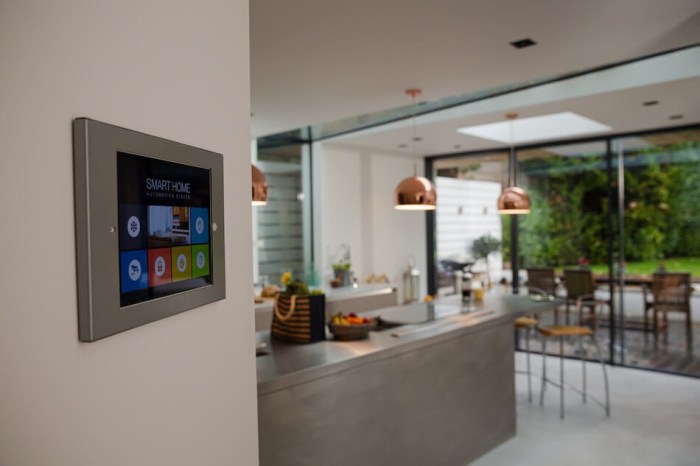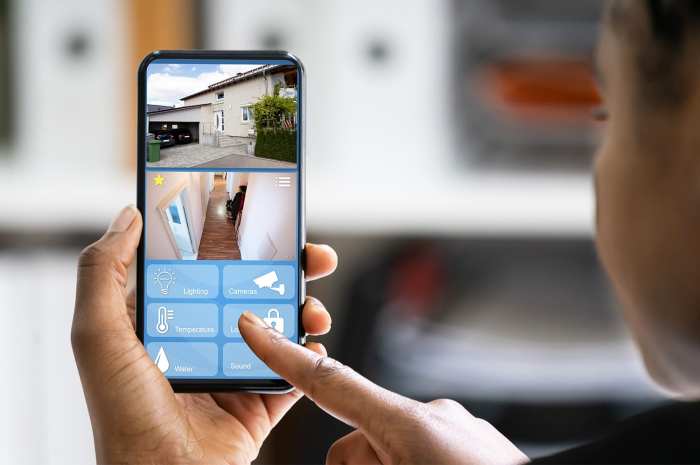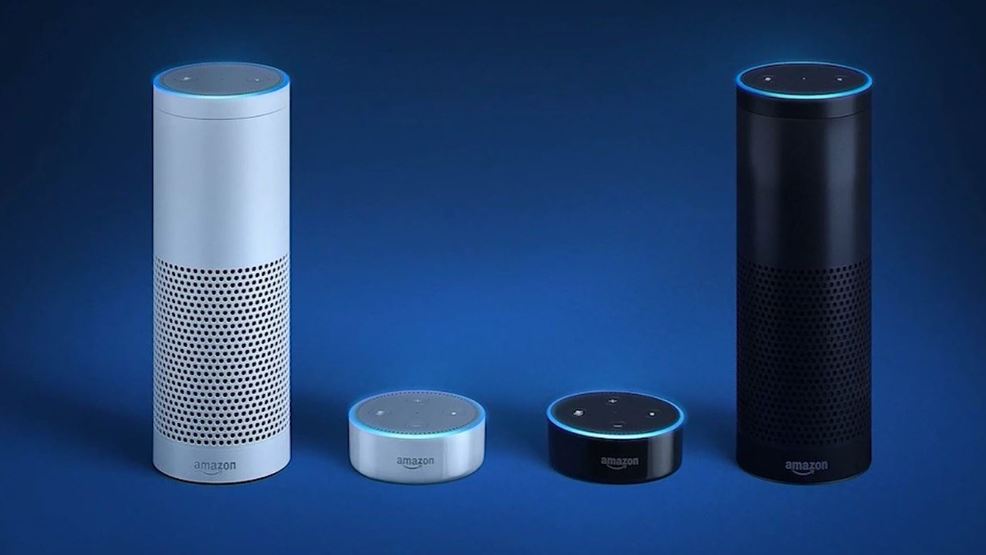Smarthome device has dramatically transformed the way we interact with our living spaces, seamlessly integrating technology into daily routines. These devices offer us convenience, security, and energy efficiency, making them essential tools for modern homeowners. From smart speakers to intelligent lighting systems, the variety of devices available today caters to diverse needs and preferences, paving the way for a more connected lifestyle.
As we navigate the myriad options in the market, understanding the functionalities and benefits of these devices becomes crucial. This exploration reveals not only the types of smart home devices but also their significance in enhancing our quality of life, demonstrating how technology can harmonize with our environments to create a smarter, safer, and more efficient home.
Smart Home Device Overview
Smart home devices represent a significant evolution in home automation technology, allowing homeowners to remotely manage various household functions through connected devices. These devices can enhance convenience, improve energy efficiency, and enhance security, thereby transforming the way people interact with their living spaces.The functionalities of smart home devices range from controlling lighting and temperature to managing security systems and appliances.
With the integration of artificial intelligence and the Internet of Things (IoT), these devices provide users with unparalleled control and automation capabilities. The range of smart home devices available in the market is extensive and continuously expanding.
Types of Smart Home Devices
Understanding the different types of smart home devices is essential for anyone looking to enhance their living experience. The following categories represent the most common smart home devices and their primary functions:
- Smart Speakers: Devices like Amazon Echo and Google Nest Hub serve as central control hubs, allowing voice commands to manage other smart devices and play music or provide information.
- Smart Thermostats: Products such as Nest and Ecobee enable users to optimize heating and cooling schedules based on their habits, which can lead to significant energy savings.
- Smart Lighting: Brands like Philips Hue and LIFX allow users to control the brightness and color of lights remotely or automate them based on time or occupancy.
- Smart Security Systems: Devices such as Ring and Arlo provide real-time video surveillance and alerts to enhance home security.
- Smart Appliances: Innovations in kitchen and laundry appliances, such as smart refrigerators and washers from brands like Samsung and LG, allow for remote monitoring and control.
- Smart Plugs and Switches: These devices enable users to control any traditional appliance, making them ‘smart’ by allowing remote operation and scheduling.
The importance of smart home devices in modern living cannot be overstated. They contribute not only to comfort and convenience but also to the overall efficiency of household operations. By automating everyday tasks, homeowners can save valuable time and reduce energy consumption, ultimately leading to lower utility bills. Furthermore, smart home technology provides enhanced safety and security measures, giving users peace of mind when they are away from home.
Overall, these devices are paving the way for smarter, more efficient living environments.
Benefits of Smart Home Devices: Smarthome Device

Smart home devices have revolutionized the way we live, offering improvements that extend beyond mere convenience. These innovations not only create a seamless living experience but also provide significant benefits in areas such as energy efficiency, security, and overall lifestyle enhancement. Understanding these advantages can help consumers make informed decisions about integrating smart technology into their homes.
Energy Efficiency Improvements
Smart home devices play a crucial role in enhancing energy efficiency across households. By utilizing technology that monitors and optimizes energy consumption, these devices contribute to both environmental sustainability and cost savings. Key benefits include:
- Smart Thermostats: Devices like the Nest Learning Thermostat can adjust heating and cooling based on user behavior, leading to energy savings of up to 15% on heating bills.
- Smart Lighting: LED bulbs that can be controlled remotely allow users to turn off lights from anywhere, reducing unnecessary energy use.
- Energy Monitoring Systems: These systems provide real-time data on energy usage, enabling homeowners to identify and address energy waste effectively.
Smart home technology not only reduces energy costs but also contributes to a lower carbon footprint, making it an essential component in the quest for eco-friendly living.
Security Advantages
The integration of smart technology into home security systems offers unparalleled peace of mind. Smart home devices enhance security through advanced features that traditional security systems cannot match.Important features include:
- Smart Cameras: Equipped with motion detection and mobile alerts, these cameras allow homeowners to monitor their property in real-time from anywhere.
- Smart Locks: Keyless entry systems enable users to grant access remotely and monitor who enters and exits their home, increasing overall security.
- Alarm Systems: Smart alarms can be connected to emergency services, ensuring prompt assistance in case of a security breach.
These advancements not only deter potential intruders but also provide homeowners with the ability to respond quickly to emergencies, enhancing overall safety.
Convenience and Lifestyle Improvements
The advent of smart home devices has transformed everyday living, making tasks more manageable and enhancing the overall quality of life. The convenience offered by these technologies is significant, allowing users to control various aspects of their home with ease.Notable lifestyle benefits include:
- Voice Control: Virtual assistants like Amazon Alexa and Google Assistant enable users to control devices hands-free, streamlining daily routines.
- Automated Routines: Smart devices can be programmed to perform tasks automatically, such as turning on appliances or adjusting lighting based on the time of day.
- Remote Access: Homeowners can control their smart devices from anywhere, providing flexibility and convenience whether at work or on vacation.
This level of automation not only simplifies daily tasks but also allows individuals to focus on what truly matters in their lives, thus enhancing overall wellbeing.
Smart home devices are not just about technology; they are about creating a more efficient, secure, and comfortable living environment for everyone.
Popular Smart Home Devices
The realm of smart home technology continues to evolve, introducing devices that enhance convenience, security, and energy efficiency. Consumers are increasingly adopting smart devices, making them integral components of modern living. This section highlights the top five smart home devices that are currently trending in the market, showcasing their features and the advantages they offer.
Top Five Trending Smart Home Devices
The following devices have gained significant popularity due to their innovative features and user-friendly interfaces. They represent the forefront of smart home technology, catering to varied needs and preferences.
- Amazon Echo (4th Gen): This smart speaker features improved audio quality, a built-in Zigbee hub for controlling smart home devices, and Alexa integration, making it a versatile addition to any home. Priced around $99, it offers robust smart home control functionalities.
- Google Nest Hub (2nd Gen): With a vibrant display and Google Assistant built-in, this device allows users to control various smart home devices intuitively. It is priced around $99 and offers sleep tracking features along with a personalized home dashboard.
- Philips Hue White and Color Ambiance Starter Kit: This smart lighting system includes smart bulbs that can change colors and be controlled via app or voice. The kit, typically priced around $199, helps create mood lighting and can be integrated with various smart home ecosystems.
- Ring Video Doorbell Pro 2: Equipped with advanced features such as HD video, two-way talk, and motion detection, this video doorbell enhances home security. The price is around $249, making it a premium option for monitoring home entrances.
- iRobot Roomba i7+: This autonomous vacuum cleaner can be scheduled and controlled via an app, making it a convenient cleaning solution. The pricing starts at around $799, reflecting its advanced mapping and cleaning capabilities.
Comparison of Smart Speakers
Smart speakers are essential devices in any smart home setup, allowing voice control and integration with other smart devices. Below is a comparison of popular brands, highlighting their features and pricing.
| Device | Features | Price |
|---|---|---|
| Amazon Echo (4th Gen) | Alexa integration, Zigbee hub, high-quality audio | $99 |
| Google Nest Audio | Google Assistant, great sound quality, multi-room audio | $99 |
| Apple HomePod mini | Siri integration, intercom features, high-fidelity audio | $99 |
| Sonos One | Alexa and Google Assistant support, stereo sound, multi-room capability | $199 |
| JBL Link Portable | Google Assistant, Bluetooth connectivity, waterproof design | $149 |
Smart Lighting Options Comparison
Smart lighting systems are increasingly popular for their ability to enhance aesthetics and energy efficiency in homes. Below is a comparison of various smart lighting options from leading manufacturers.
| Brand | Product | Features | Price |
|---|---|---|---|
| Philips Hue | Hue White and Color Ambiance Bulbs | 16 million colors, smart control, HomeKit compatibility | $49.99 per bulb |
| LIFX | LIFX A19 | No hub required, Wi-Fi connectivity, bright colors | $39.99 per bulb |
| Wyze | Wyze Bulbs | Voice control, scheduling, energy monitoring | $7.99 per bulb |
| TP-Link | Kasa Smart Bulb | Remote control, color changing, energy saving | $14.99 per bulb |
| GE | GE C by GE Smart Bulb | Voice control, multi-color, no hub needed | $15.99 per bulb |
Smart Home Integration

Integrating multiple smart home devices into a single cohesive system enhances the convenience and functionality of your living space. A well-integrated smart home allows for seamless communication between devices, ensuring they work in harmony to improve daily routines and energy efficiency. This process involves careful planning, selection of compatible technologies, and setting up a central control hub, which serves as the backbone of your smart home environment.Establishing a central control hub is essential for managing your smart home devices efficiently.
This hub acts as the command center, allowing you to control, monitor, and automate all your smart devices from a single interface. Here are the steps to effectively set up your central control hub.
Steps for Setting Up a Central Control Hub
To successfully create a central control hub, follow these steps to ensure smooth integration and operation of your smart home devices:
1. Choose a Compatible Hub
Select a central control hub that supports a wide range of devices and protocols, such as Zigbee, Z-Wave, or Wi-Fi. Popular options include Samsung SmartThings, Amazon Echo Plus, and Google Nest Hub.
2. Connect Devices to the Hub
Follow the manufacturer’s instructions to connect each smart device to the hub. This usually involves downloading an app, creating an account, and going through a pairing process.
3. Organize Devices into Groups
For easier management, group devices based on their location or function, such as “Living Room” or “Security.” This allows you to control multiple devices simultaneously with a single command.
4. Set Up Automations and Routines
Utilize the hub’s automation features to create schedules or triggers for your devices. For instance, you might set your lights to turn on automatically at sunset or your thermostat to adjust based on your daily routine.
5. Regularly Update Software
Ensure your hub and all connected devices have the latest firmware and software updates. This improves security and functionality while preventing compatibility issues.
Ensuring Compatibility Between Smart Home Technologies
To achieve a unified smart home experience, ensuring compatibility between various devices and technologies is crucial. Here are best practices that help in maintaining interoperability among different smart home products:
Research Device Compatibility
Before purchasing, verify that devices are compatible with your chosen hub and support the same communication protocols. Many manufacturers provide compatibility lists on their websites.
Utilize Smart Assistants
Leverage platforms like Amazon Alexa, Google Assistant, or Apple HomeKit, which support a wide range of third-party devices. These assistants can act as intermediaries for devices that might not directly communicate with each other.
Adopt Open Standards
Choose devices that adhere to open standards, such as Matter, which aims to create universal compatibility across various brands and platforms. This can significantly reduce compatibility challenges.
Keep an Eye on Firmware Updates
Regularly check for and install firmware updates for all devices. This not only enhances compatibility but also adds new features and security enhancements.
Engage with Community Forums
Join smart home user communities or forums to share experiences and solutions. Members often exchange tips on compatibility issues and effective integrations.By following these guidelines, you can create a harmonious smart home ecosystem that enhances your quality of life while maintaining ease of use and reliability.
Future of Smart Home Technology

The future of smart home technology promises a blend of innovation and enhanced user experience, driven by advancements in artificial intelligence, connectivity, and automation. As we advance further into the digital age, smart home devices are set to become more integrated into our daily lives, making homes not only smarter but also more responsive to our needs. This evolution is not merely about adding new gadgets but transforming the entire home ecosystem for improved efficiency and convenience.
Emerging Trends in Smart Home Technology, Smarthome device
Several key trends are shaping the future of smart home technology, reflecting the ongoing evolution of consumer expectations and technological capabilities. These trends indicate a shift towards more intelligent, interconnected, and user-friendly options that enhance the living experience.
- Enhanced Interoperability: The future will see greater compatibility among devices from different manufacturers, allowing seamless integration of diverse systems, thus creating a more unified smart home experience.
- AI-Powered Automation: The use of artificial intelligence will lead to smarter devices that learn user preferences and behaviors, automating tasks such as energy management and security monitoring.
- Voice and Gesture Control: Voice-activated systems will continue to evolve, minimizing the need for physical interfaces and enabling more intuitive interactions with smart home devices.
- Increased Focus on Security: As smart homes become more popular, the demand for robust security measures will grow, leading to more sophisticated encryption methods and real-time threat detection.
- Energy Efficiency Innovations: Future devices will emphasize sustainability, with smart energy management systems that optimize resource use and reduce overall consumption, contributing to a greener planet.
Anticipated Advancements in Smart Home Devices
The next decade is expected to bring significant advancements in smart home devices that will redefine how we interact with our living spaces. These advancements will encompass new functionalities, improved technologies, and enhanced user experiences.
- Smart Appliances: Appliances will gain advanced features such as self-diagnosis and remote operation, allowing users to manage their home from anywhere.
- Home Health Monitoring: Wearable devices and smart home integrations will facilitate health monitoring, allowing for real-time tracking of vital signs and health metrics.
- Augmented Reality Interfaces: Augmented reality will enable users to visualize smart home configurations and settings, allowing for enhanced customization and management of home environments.
- Robust Data Analytics: Smart homes will utilize big data to provide insights into consumption patterns, enabling better decision-making regarding energy use and device management.
- Advanced Home Security Systems: Future security systems will integrate facial recognition, motion detection, and predictive analytics to enhance home safety comprehensively.
Challenges and Considerations for Future Smart Home Innovations
While the future of smart home technology is bright, several challenges and considerations must be addressed to ensure safe, reliable, and user-friendly systems.
- Privacy Concerns: With the collection of significant amounts of data, concerns over privacy and data security must be prioritized to build consumer trust.
- Standardization Issues: The lack of universal standards can hinder the interoperability of devices, making it essential for manufacturers to collaborate on common protocols.
- Dependence on Internet Connectivity: Many smart home devices require constant internet access, posing risks if connectivity is compromised, necessitating the development of more resilient systems.
- Cost Barriers: The initial investment for comprehensive smart home systems may deter some consumers, indicating a need for more affordable, entry-level solutions.
- Technological Complexity: As systems become more sophisticated, user-friendliness must be maintained to ensure that all consumers can effectively leverage smart home technologies.